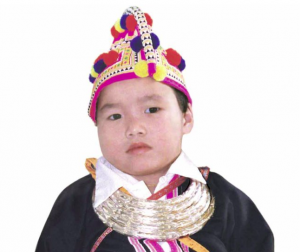
Today, it's hard enough for doctors and patients to communicate effectively, even if they share the same primary language. But layer on not only language differences, but also a yawning cultural chasm, and a visit to western medicine might lead to a child being removed from the care of her parents.
That was the case for Lia Lee, a young Hmong refugee in Merced who suffered from epilepsy. As Anne Fadiman profiled in her riveting book, The Spirit Catches You and You Fall Down, Lia's doctors grew frustrated by her parents' unwillingness to follow their prescriptions for treatment, and the doctors ultimately had Lia legally removed from her parents' care.
As the New York Times reports:
In traditional Hmong belief, qaug dab peg, [Hmong for epilepsy] like many illnesses, is spiritual in origin, caused when the soul becomes separated from the body. A traditional cure might entail visits from a shaman, who would attempt to reunite body and soul.
A work of narrative nonfiction, Ms. Fadiman’s book is a cautionary tale about the cultural chasm between Lia’s family, with its generations-old animist beliefs, and her rationalist American doctors.
“In some sense, I was trying to provide a way of controlling her seizures with Western methods and Western medicines,” said Dr. Neil Ernst, who with his wife, Dr. Peggy Philp, was one of the pediatricians who treated Lia early on. “And in some sense, the Lees were giving up control of their child to a system that they didn’t understand.”
For 26 years, her days varied little: her parents bathed her, fed her, flexed her stiffened limbs, kissed, caressed and tenderly talked to her. There were visits to doctors in Merced and later in Sacramento, where the family moved in 1996. There were periodic visits from a shaman, intended not so much to cure Lia as to ease her suffering.
“Everything that my parents had done for her is all manual labor,” Mai Lee said on Wednesday. “Carrying her from place to place, transporting her to appointments here and there, it was all done manually. They did that for a very long time.”
The shaman training program, Partners in Healing, is now in its twelfth year and has trained over 100 shamans throughout the Central Valley. The program also teaches shamans when to refer their patients to a doctor.
“It’s pretty much the shaman that do the referral,” said (Hmong shaman May) Yang. “Because if patient call me … more of the time I would tell them, ‘You have disease, you have virus, or you have infection. You need to go to the doctor right away.’ And the patient will listen and say, ‘OK, if you say so. I’ll go see my doctor right away.’ If the doctor cannot find anything then they will come to me and I will do the ceremony for them.”
Changvang Her is an interpreter with Healthy House who interprets for shamans and the hospital’s Hmong patients. He also acts as a cultural broker between the shamans and medical staff. Her says the key is to explain things like CAT Scans in a way that’s sensitive to how shamans see the world.
“In order to make the shamans understand about the image here, I explain, ‘The shaman they can see spirits, whereas the doctor use CT, x-ray, and microscope to see disease or illness.’ So we make that comparison so they understand about the equipment.” ...
Doctors also attend traditional Hmong ceremonies where they get to spend time with shamans outside of the hospital setting and learn more about their healing traditions. Now physicians in cities with large Hmong populations, like Sacramento and Fresno, are looking to Mery Medical Center as a model. “It’s bridged that gap, from our physicians, our staff, to the Hmong culture.”
Learn More: